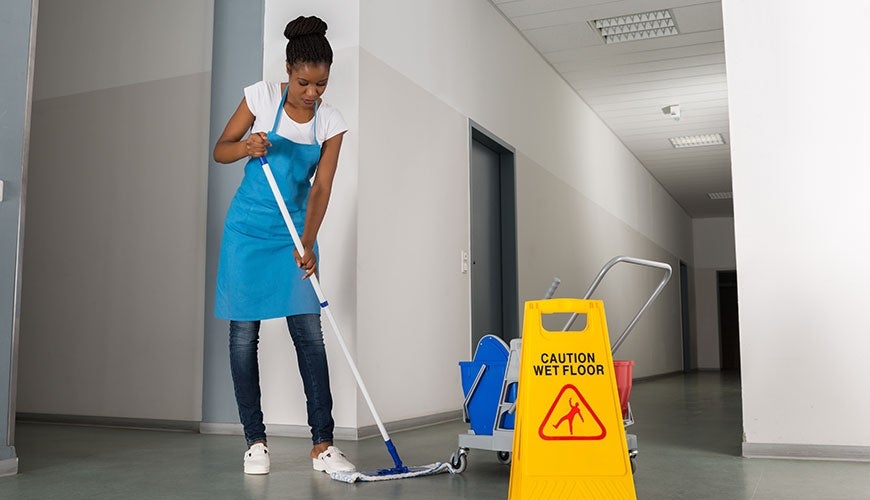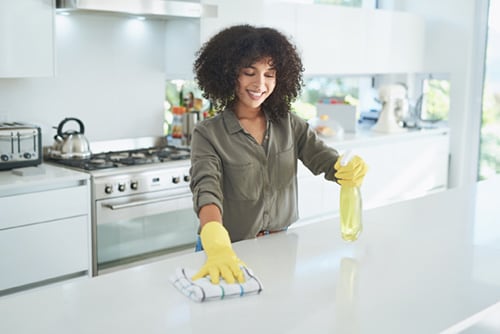Comprehending the Requirement for Extensively Decontaminating and Sanitizing Frequently Touched Surfaces in High-Traffic Locations
In the realm of public health and safety and security, the precise sanitation and sanitization of regularly touched surface areas in high-traffic locations stand as paramount measures in stopping the spread of damaging microorganisms. By checking out the numerous elements of surface disinfection, from the threats linked with disregarding cleansing protocols to the efficient techniques that can be used, a more clear understanding emerges of the crucial role these techniques play in safeguarding public wellness.
Importance of Surface Sanitation
Highlighting the thorough disinfection of high-traffic surfaces is vital in preserving a hygienic setting and preventing the spread of harmful microorganisms. High-touch surfaces such as door takes care of, light buttons, elevator buttons, and countertops work as breeding premises for germs and infections. Routine disinfection of these surfaces is necessary to minimize the danger of contamination and transmission of health problems.
By implementing a robust disinfection protocol, institutions and organizations can produce a safer atmosphere for site visitors, consumers, and workers. Appropriate surface disinfection not only alleviates the spread of infectious diseases however additionally infuses self-confidence in the sanitation and safety and security of the premises. This positive approach demonstrates a commitment to health and health, which is specifically important in high-traffic locations where the probability of direct exposure to microorganisms is heightened.
Additionally, surface disinfection plays a vital function in general infection control techniques. Integrated with hand health methods, wearing masks, and maintaining physical distancing, detailed sanitation of high-touch surfaces develops a comprehensive defense against the transmission of harmful microbes. Prioritizing surface area sanitation is a necessary element of an alternative approach to wellness and safety and security in shared rooms.
Dangers of Overlooking Cleaning Practices
Neglecting complete disinfection of high-traffic surfaces substantially heightens the risk of microbial and viral contamination, presenting a severe risk to the health and wellness of people frequenting these spaces. Failure to apply proper cleaning methods can bring about the buildup and spread of hazardous microorganisms, consisting of viruses and bacteria, on frequently touched surfaces such as doorknobs, hand rails, elevator switches, and counter tops.

In addition, overlooking the value of comprehensive cleansing not just compromises the health of people but likewise weakens initiatives to maintain a sanitary and clean environment. It is critical to recognize the value of proper sanitation procedures in stopping the spread of infections and guarding public wellness.
Reliable Sanitation Approaches
To maintain optimum sanitation and minimize the danger of contamination on high-traffic surface areas, employing efficient sanitation approaches is vital. One of the most common and effective sanitation methods is using chemical disinfectants.
Another effective approach is the use of UV-C light. UV-C light has been revealed to be efficient in killing a large range of bacteria by disrupting their DNA structure, hence stopping them from reproducing. It is crucial to utilize UV-C light properly, making sure that the appropriate intensity and exposure time are used to accomplish the desired sanitation outcomes.
Additionally, using heavy steam cleansing as a disinfection method can be highly effective, especially on surface areas that are heat-resistant. Steam can pass through more info here porous surfaces and kill microorganisms, infections, and various other pathogens properly. When using heavy steam cleansing, it is very important to ensure that the surface area reaches the needed temperature for an enough amount of time to guarantee correct disinfection.
Influence On Public Health And Wellness
The upkeep of high standards of sanitation and sanitation on high-traffic surface areas plays an essential function in safeguarding public health. Regularly touched surface areas in areas with high footfall, such as doorknobs, hand rails, elevator buttons, and restroom centers, function as reproducing grounds for hazardous microorganisms. Failing to effectively disinfect these surface areas can bring about the quick spread of contagious illness within neighborhoods. By applying extensive disinfection protocols, the threat of transmission of viruses, microorganisms, and various other germs can be considerably decreased.
In high-traffic locations like flight terminals, institutions, medical facilities, and public transport systems, the impact of extensive disinfection steps can not be understated. Focusing on the sanitization of often touched surface areas is a proactive technique to promoting public health and improving the safety of individuals in shared rooms.
Applying Regular Cleansing Procedures
Immediately instituting and sticking to a regular schedule of cleaning procedures is vital for maintaining the sanitation and security of high-traffic surfaces. Regular cleansing procedures are vital in stopping the accumulation of bacteria and microorganisms on regularly touched surface areas, especially in areas with high foot traffic. By applying an organized strategy to cleaning, organizations can properly minimize the danger of illness transmission go to these guys and create a much healthier atmosphere for staff members, consumers, and the public.
To develop an effective cleansing schedule, it is vital to determine high-traffic locations that require frequent focus. These locations may include doorknobs, hand rails, elevator switches, washroom centers, and shared devices. Implementing a regular cleaning regimen that targets these surfaces several times a day can dramatically lower the spread of damaging germs and viruses.
Furthermore, utilizing proper cleaner and anti-bacterials is crucial to ensuring that surface areas are extensively disinfected. Routine training of cleansing staff on appropriate cleansing techniques and the importance of adherence to the cleansing routine is likewise essential in preserving a hygienic environment. By prioritizing consistent cleaning methods, companies can promote the health and wellness and health of people that interact with these high-traffic surfaces.

Conclusion
In verdict, it is crucial to focus on extensive disinfection and sanitization of regularly touched surface areas in high-traffic locations to stop the spread of hazardous microorganisms and keep public health and wellness. It is important to acknowledge the value of keeping tidy surfaces in high-traffic areas to make certain the well-being of the neighborhood.
In the realm of public wellness and safety and security, the meticulous sanitation and sanitization of frequently touched surfaces in high-traffic locations stand as critical procedures in preventing the spread of damaging pathogens. By checking out the different elements of surface sanitation, from the dangers connected with disregarding cleaning protocols to the efficient techniques that can be utilized, a more clear understanding arises of the vital function these techniques play in safeguarding public health and wellness.Additionally, using steam cleansing as a disinfection method can be highly efficient, especially on surface areas that are heat-resistant. When making use of vapor cleansing, it is essential to ensure that the surface reaches the required temperature level for an adequate amount of time to ensure proper disinfection.
In conclusion, it is essential to prioritize thorough disinfection and sanitization of Extra resources often touched surfaces in high-traffic locations to prevent the spread of hazardous microorganisms and keep public wellness.